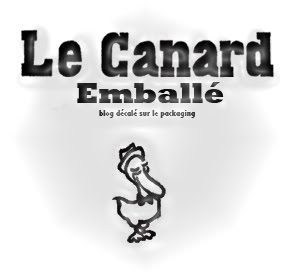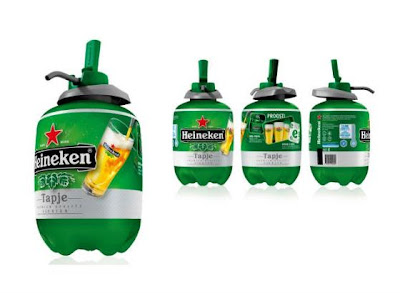Après avoir vu les différents DUT GCE en France, nous allons nous intéresser aux poursuites d’études possibles. Les premières d’entre elles sont les licence pro packaging. Elles sont assez nombreuses donc je vous citerai toutes celles que j’ai trouvé puis je m’attarderai sur une. Les voici :
· Adaptation des Emballages et Design Industriel EN ALTERNANCE (apprentissage ou Contrat de Professionnalisation), IUT d'Évreux
· Emballage et conditionnement des produits du vivant - ALIPACK, IUT de Montpellier
· Conception des Emballages et Design Industriel, IUT de Reims
· Technico-commercial en emballage et conditionnement - FORMAPACK, CCI - IUT de Morlaix
· Design produits et Packaging, Villefontaine - IUT de Chambéry
· Transformation et conditionnement des produits alimentaires - IUT de Lyon
· Technologiste Emballage*, ESEPAC - Clermont-Ferrand
· Technicien supérieure Packaging, FSPack – Cognac
L’admission se fait généralement après avoir obtenu un DUT ou un BTS et envoyé un dossier de candidature. Des dérogations sont toutefois possibles après un passage devant une commission. Vous pourrez trouver des formations continues ou en alternance suivant vos souhaits.
Je vais maintenant un peu plus m’attarder sur la formation de Cognac. La formation inclut un stage obligatoire en entreprise de 12 semaines et s’appuie sur :
· La conception, réalisation et l’intégration de tout ou partie d’un projet en matière d’emballage en liaison avec une entreprise industrielle.
· La réalisation de divers tests d’emballages.
· La modélisation et la mise en place de méthodes permettant l’aboutissement du projet.
· L’élaboration des dossiers de réalisation.
 |
| Contenu de la formation |
En liaison directe avec les entreprises industrielles notamment celles du domaine de l’emballage et du conditionnement, les étudiants doivent avoir:
· Un niveau correct en enseignement général.
· Le sens de l’organisation, de la gestion et de l’analyse.
· Le sens des responsabilités et de l’initiative.
· L’intérêt de la communication.
Enfin au-delà des aspects formations et profils des étudiants, le gros point fort de la formation est sont parc machine. En effet beaucoup de tests sont possibles pour simuler tout types de situations d’un emballages. Des entreprises viennent d’ailleurs tester leurs emballages sur la machine de traction, le simulateur de transport ou l’enceinte climatique. Pour le prototypage, les étudiants pourront utiliser CATIA et la table de découpe ou l’imprimante 3D.
Comme pour le DUT GCE, les débouchés sont importantes pour des métiers allant de Chef de Produit à Responsable de production, en passant par Concepteur de PLV.
 |
| Parc machine |
Plus d'infos sur : http://www.formation-packaging.fr/
Focus on Packaging training II
After seeing the various TPSD in France, we will focus on prosecution of possible studies. The first of them are professional packaging degree. They are numerous so I will give you all the ones I found and I dwell on. They are:
· Packaging Adjustment and Industrial Design ALTERNATING (apprenticeship contract "), IUT d'Evreux
· Packing and packaging live products - ALIPACK, IUT Montpellier
· Design of Packaging and Industrial Design, IUT de Reims
· Technical and commercial packaging and packing - Formapack CCI - IUT de Morlaix
· Products Design and Packaging Villefontaine - IUT de Chambery
· Processing and packaging of food products - IUT Lyon
· Packaging Technologist * ESEPAC - Clermont-Ferrand
· Superior Packaging Technician, FSPack – Cognac
Admission is usually after having obtained a DUT or a BTS and sent an application form. However, exceptions are possible after an appearance in front of a commission. You can find further training or alternating training according to your wishes.
I will now dwell a little on the formation in Cognac. The training includes a mandatory internship in a company of 12 weeks and it is based on:
· The design, implementation and integration of all or parts of a project on packaging in conjunction with an industrial company.
· Completion of various packaging tests.
· Modeling and implementation of methods to complete the project.
· Development of achievement records.
Direct linkage with industry including the field of packaging, students must have:
· A good standard of general education.
· The sense of organization, management and analysis.
· A sense of responsibility and initiative.
· Good communication skills.
Finally, beyond the training aspects and student profiles, the big highlight of the training is the machine park. Indeed, many tests are possible to simulate all types of packaging situations. Companies are also testing their packaging on the traction machine, the transport simulator or the climatic chamber. For prototyping, students will use CATIA and the cutting table or the 3D printer.
As for the TPSD, jobs at the end of the training, you will have access to various jobs, like Product Manager or Designer.



